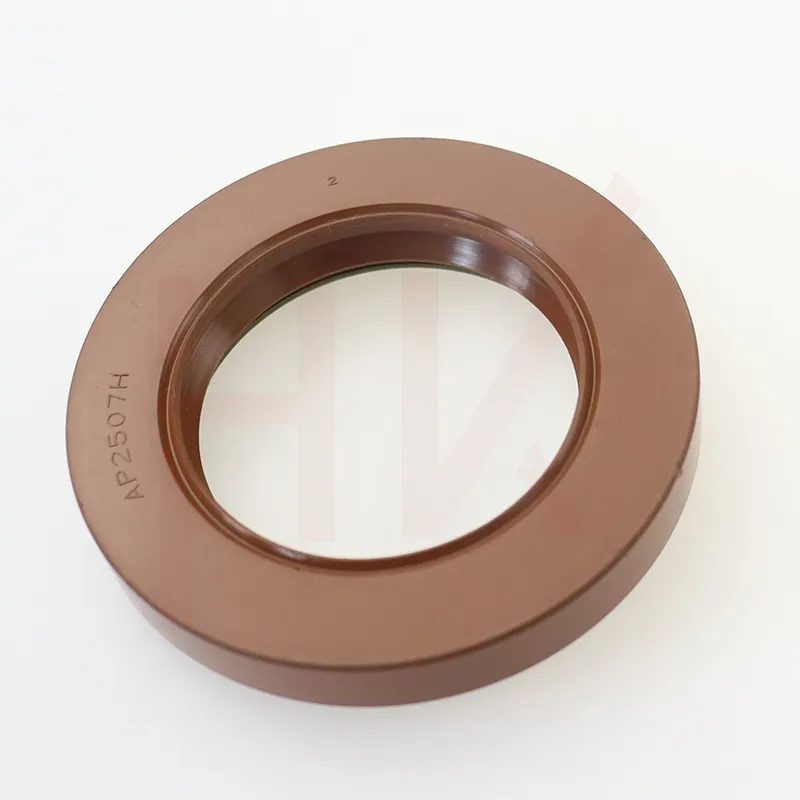Dec . 09, 2024 20:00 Back to list
Design and Functionality of Pneumatic Wiper Seals for Enhanced Performance and Durability
Understanding Pneumatic Wiper Seals
Pneumatic systems are a critical part of many industrial applications, including automation, manufacturing, and automotive industries. These systems rely on various components to ensure their effectiveness, and one such essential component is the pneumatic wiper seal. This article explores the significance, function, and applications of pneumatic wiper seals, along with considerations for their proper use and maintenance.
What is a Pneumatic Wiper Seal?
A pneumatic wiper seal is a type of sealing element specifically designed to wipe away contaminants from the surface of a moving component, usually a piston, while retaining the working fluid (often air or oil) within a sealed environment. These seals are vital in preventing dust, dirt, and moisture from entering the system, which could lead to performance issues or even failure of the pneumatic equipment.
The design of wiper seals typically features a lip or edge that contacts the moving surface. As the component moves, the seal wipes away any debris, while the unique shape and material ensure that the working fluid is retained. Pneumatic wiper seals can be made from various elastomers or thermoplastics, chosen based on the specific environmental conditions and chemical exposure they may encounter.
Importance of Pneumatic Wiper Seals
1. Contamination Prevention Pneumatic systems are often exposed to harsh environments with potential contaminants. Wiper seals play a crucial role in safeguarding the internal components from these particles, promoting longer service life.
2. Efficiency Maintenance By keeping out dirt and moisture, wiper seals help maintain optimal pressure within the pneumatic system. This is essential for ensuring the efficiency and performance of the machinery, reducing energy consumption and operational costs.
3. Reduced Downtime With effective wiper seals in place, the likelihood of system failures caused by contamination drops significantly. This reduction in downtime is particularly important in manufacturing and production lines, where every minute of operation counts.
4. Ease of Maintenance Regular maintenance of pneumatic systems can be simplified with the use of quality wiper seals. They provide a barrier that minimizes the maintenance required by preventing dirt and moisture from accumulating around crucial components.
Applications of Pneumatic Wiper Seals
pneumatic wiper seal

Pneumatic wiper seals are used in various industries, including
- Manufacturing In automated manufacturing systems, pneumatic actuators and cylinders are commonly used. Wiper seals ensure these components remain free from debris, allowing for smooth operation.
- Automotive Many automotive applications, including suspension systems and braking systems, utilize pneumatic components where wiper seals are employed to enhance reliability and performance.
- Aerospace In aviation, pneumatic systems must operate under strict conditions. Wiper seals aid in maintaining system integrity in the face of environmental challenges.
- Construction Equipment Heavy machinery is often exposed to dirt and grueling conditions. Pneumatic wiper seals protect the hydraulic and pneumatic components, ensuring longevity and reducing maintenance needs.
Considerations for Selection and Maintenance
When selecting a pneumatic wiper seal, several factors must be considered, including the operating environment, the temperature range, and the type of fluids involved. Manufacturers typically provide detailed specifications that can help in choosing the right material and design.
Maintenance of wiper seals is crucial. Regular inspections should be conducted to check for wear or damage. If contaminants are noted around the seals, cleaning procedures should be initiated immediately to prevent internal system damage. Replacing wiper seals as part of routine maintenance can vastly improve the performance and lifespan of pneumatic systems.
Conclusion
Pneumatic wiper seals may seem like small components in the grand scheme of pneumatic systems, but their impact is significant. By providing essential protection against contamination, they ensure efficient operation, minimize downtime, and extend the life of pneumatic equipment. Understanding their importance, applications, and maintenance needs can lead to better performance and reliability in various industrial settings. Whether in manufacturing, automotive, aerospace, or construction, wiper seals are indeed vital contributors to the success of pneumatic systems.
-
TCN Oil Seal Metal Ring Reinforcement for Heavy Machinery
NewsJul.25,2025
-
Rotary Lip Seal Spring-Loaded Design for High-Speed Applications
NewsJul.25,2025
-
Hydraulic Cylinder Seals Polyurethane Material for High-Impact Jobs
NewsJul.25,2025
-
High Pressure Oil Seal Polyurethane Coating Wear Resistance
NewsJul.25,2025
-
Dust Proof Seal Double Lip Design for Construction Equipment
NewsJul.25,2025
-
Hub Seal Polyurethane Wear Resistance in Agricultural Vehicles
NewsJul.25,2025
-
The Trans-formative Journey of Wheel Hub Oil Seals
NewsJun.06,2025
Products categories
















